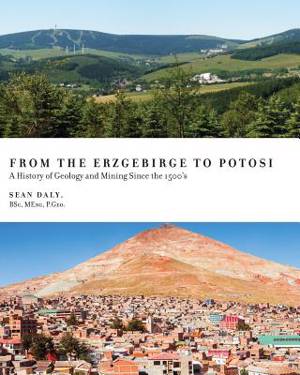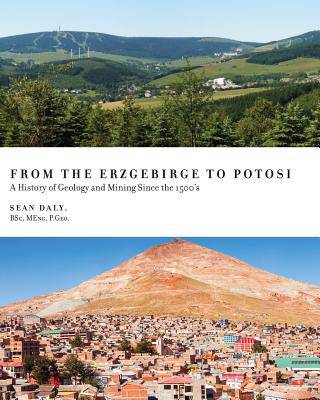
- Afhalen na 1 uur in een winkel met voorraad
- Gratis thuislevering in België vanaf € 30
- Ruim aanbod met 7 miljoen producten
- Afhalen na 1 uur in een winkel met voorraad
- Gratis thuislevering in België vanaf € 30
- Ruim aanbod met 7 miljoen producten
Zoeken
From the Erzgebirge to Potosi
A History of Geology and Mining Since the 1500's
Sean Daly, Georgius Agricola
Paperback | Engels
€ 37,95
+ 75 punten
Uitvoering
Omschrijving
This book traces the history of mining and geology from the 1500's in the valuable silver mines of the Erzgebirge Mts of eastern Germany to the rich silver mines of Bolivia, including Potosi. With emphasis on the famous first mining geologist/engineer, Georgius Agricola who wrote his treatise on mining and smelting techniques, De Re Metallica, during the Renaissance and the contributions of some well-known geologists whose theories proliferated during the Industrial Revolution, the close connection between society and the natural sciences is examined. A major section on the engineering application of mapping at a large Canadian open pit mine demonstrates modern geological and geotechnical thinking.
The powerful tools of both the miners and the geologists, dialectical and historical materialism are explained in detail in their relation to the earth's processes, the mining cycle and social redress. The environmental movement and the struggle of the miners for better working conditions and a more humane social system are discussed as is the comparison between the equitable Inca mit'a labour system and the corrupted mit'a of the Conquistadores. Richly illustrated, with 74 figures, and images of the famous scientists and maps and photographs to explain technical points make it highly readable.
The powerful tools of both the miners and the geologists, dialectical and historical materialism are explained in detail in their relation to the earth's processes, the mining cycle and social redress. The environmental movement and the struggle of the miners for better working conditions and a more humane social system are discussed as is the comparison between the equitable Inca mit'a labour system and the corrupted mit'a of the Conquistadores. Richly illustrated, with 74 figures, and images of the famous scientists and maps and photographs to explain technical points make it highly readable.
Specificaties
Betrokkenen
- Auteur(s):
- Uitgeverij:
Inhoud
- Aantal bladzijden:
- 148
- Taal:
- Engels
Eigenschappen
- Productcode (EAN):
- 9781525517594
- Verschijningsdatum:
- 25/05/2018
- Uitvoering:
- Paperback
- Formaat:
- Trade paperback (VS)
- Afmetingen:
- 203 mm x 254 mm
- Gewicht:
- 408 g

Alleen bij Standaard Boekhandel
+ 75 punten op je klantenkaart van Standaard Boekhandel
Beoordelingen
We publiceren alleen reviews die voldoen aan de voorwaarden voor reviews. Bekijk onze voorwaarden voor reviews.











